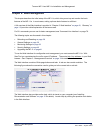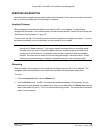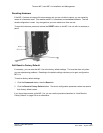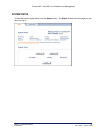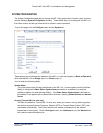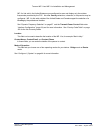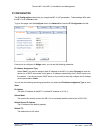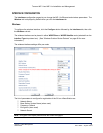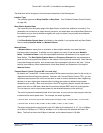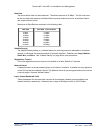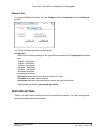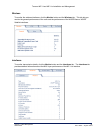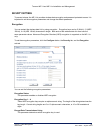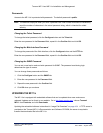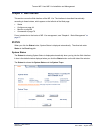
Tsunami MP.11and MP.11a Installation and Management
The fields that can be changed on this window are described in the following text.
Interface Type
The interface type can be Worp Satellite or Worp Base. *See “Wireless Outdoor Router Protocol”
on page 38.)
Base Station System Name
The name found on the system page of the Base Station to which this satellite is connecting. This
parameter can be used as an added security measure, and when there are multiple Base Stations in
the network and you want a satellite to register with only one when it may actually have adequate
signal strength for either.
If the Base Station System Name is left blank on the satellite, it can register with any Base Station
with a matching Network Name and Network Secret.
Network Name
A Network Name is name given to a network so that multiple networks can reuse the same
frequency without problems. A satellite can only register to a base if it has the same Network
Name. The Network Name is one of the parameters that allow a Subscriber Unit to register on a
Base Station. The Base Station System Name and Frequency Channel also are parameters to
guide the SU to the proper Base Station on the network, but they provide no security. Basic security
is provided through encryption, as it causes none of the messages to be sent in the clear. Further
security is provided by mutual authentication of the Base Station and Subscriber Unit using the
Network Secret.
Transmit Power Control (Tsunami MP.11a units only)
By default, the Tsunami MP.11a lets users transmit at the maximum output power for the country or
regulatory domain and frequency selected. However, with Transmit Power Control (TPC), you can
adjust the output power of the unit to a lower level in order to reduce interference from neighboring
devices or to use a higher gain antenna without violating the maximum radiated output power
allowed for your country. Also, most countries in the ETSI regulatory domain require the transmit
power to be set to a 6 dB lower value than the maximum allowed EIRP when link quality permits.
You can see your unit’s current output power for the selected frequency in the event log.
The event log shows the selected power for all data rates, so you must look up the proper data rate
to determine the actual power level. For example, the event log shows:
0 00:00:08–INFO- Final Power 6 Mb 20 dBm, MaxRD 30 dBm, MaxEdge 31 dBm, -TPC Scale 0 dBm – Ant Red 0 dBm*
0 00:00:09–INFO- 20 dBm | 20 dBm | 20 dBm | 20 dBm | 20dBm | 19 dBm | 17 dBm | 14 dBm |
The above shows that the output power is set at 20 dBm for the data rate 6, 9, 12, 18, or 24 Mbps;
at 19 dBm for 36 Mbps, at 17 dBm for 48 Mbps, or at 14 dBm when the selected data rate is 54
Mbps. The first line shows that 6 Mbps is selected, so the transmit power is 20 dBm.
Chapter 4. Basic Management 35
CPN 65755 Issue Date: August 2003



